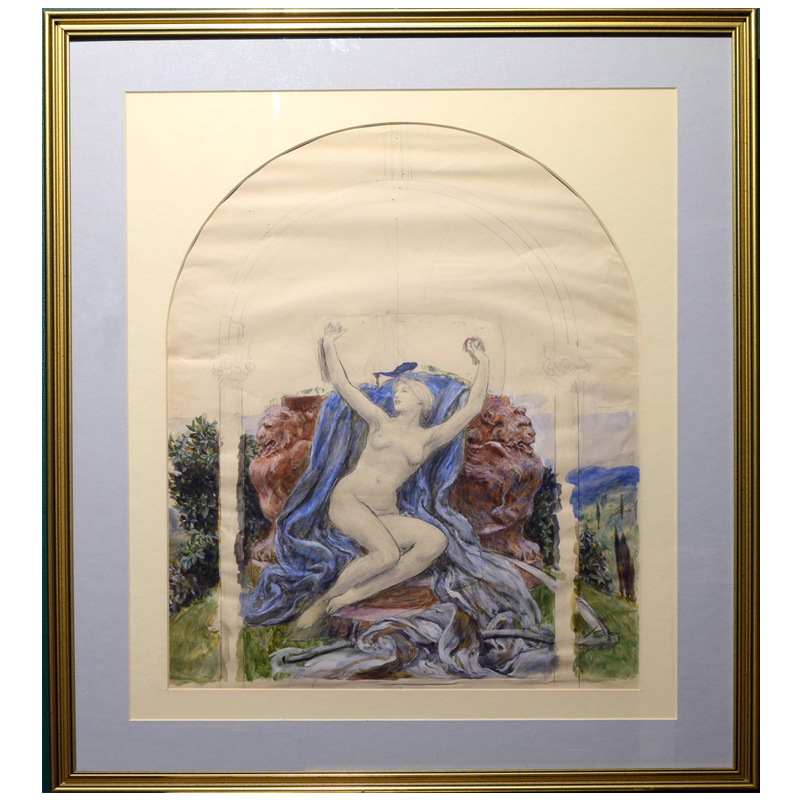Drawn from Life
Art Gallery
8 December 2018 to 7 April 2019
Life drawing captures the human form in all its shapes, sizes and poses. It is a practice that trains the eye to observe variations in the human body – the shapes, muscles and bones within it, at different angles and with diverse lighting effects. It is a visual encounter with movement, weight, balance and tension and therefore presents a most complex exercise for a student.
A significant feature of the Herkomer School of Art (1883 – 1904) in Bushey was the provision of life classes for both men and women. Life drawing or figure drawing was fundamental to Herkomer’s method of teaching art.
To be enrolled at the school, a student had to submit an acceptable example of a drawing of a head. From a preliminary class, the student could progress to the life class, where, as Herkomer himself once said in one of his lectures, “In that study he or she becomes the ‘painter’ proper; he or she learns to grasp the difficulties of reality, of actuality; he or she becomes the master of his artistic language, of technique… He or she learns, in this exercise, to love nature for nature’s sake.”
Lucy Kemp-Welch carried on the School of Art when Herkomer gave up teaching and later a couple of other students opened schools in Bushey. This tradition of creating art continued well into the 1970s. Today, life drawing classes are given in the Frobisher Studio at the rear of the Bushey Museum.

